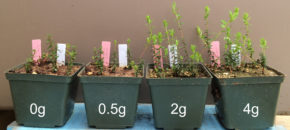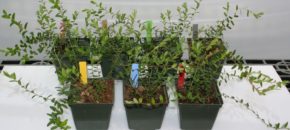The recent warm weather means its time to started on lawn and landscape projects. You may have plans to seed bare spots in the lawn that you didn’t get to in the autumn. These bare spots may be the result of fungal diseases, which were aplenty due to h… Read More »
Continue reading...Weed Control in Spring Seedings
The recent warm weather means its time to started on lawn and landscape projects. You may have plans to seed bare spots in the lawn that you didn’t get to in the autumn. These bare spots may be the result of fungal diseases, which were aplenty due to h… Read More »
Continue reading...Tree Fruit IPM Report for April 5, 2019
Peach: Brown Rot: Blossom infections from the brown rot fungus can occur whenever pistils are exposed and a favorable climate exists. Infections can occur during any wetting period when temperatures are between 41 and 86 °F. However, optimum conditions for infection occur with wetting and temperatures in the mid 70’s.
Continue reading...Pesticide Storage Inventory Due May 1st: Download Rutgers Templates
Pesticide Applicator or Dealer Storage Inventory with Cover Letter Due May 1st to Fire Department All licensed pesticide applicators, as well as dealers, who store pesticides are required by law to send a copy of their storage inventor(ies) with an exp… Read More »
Continue reading...Beating the Bugs in the Bogs: Fertilizer Affects Cranberry Resistance against Insect Pests

Cranberry plants originate from relatively nutrient-poor environments, but commercial cranberries receive fertilizer to improve plant growth and yield. Increased fertilizer use may influence plant resistance to insect pests. At the P.E. Marucci Blueberry & Cranberry Research Center, a study by Elvira de Lange, Vera Kyryczenko-Roth, Jennifer Johnson-Cicalese, Joan Davenport, Nick Vorsa, and Cesar Rodriguez-Saona looked […]
Continue reading...Beating the Bugs in the Bogs: Attracting Beneficial Insects

Cranberry plants produce volatiles when attacked by herbivorous insects, which can be used by beneficial insects, such as predators and parasitoids, to find food or hosts. Synthetic volatiles could potentially attract additional beneficial insects to cranberry fields, reducing insect damage and resulting in reduced yield losses. These volatiles could be used also to monitor the […]
Continue reading...